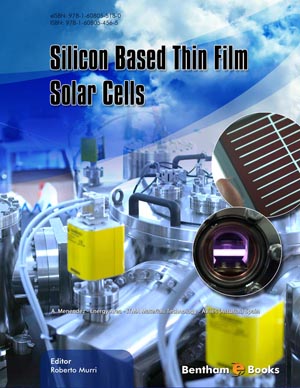Abstract
The chapter presents a short review of the general principles of photovoltaic conversion and different types of thin films solar cells. The aim is to present how a device can evolve from the classical Si p-n junction, with its physical constraints limiting the conversion efficiency, to devices where higher absorption of the light and improved structural design result in higher conversion efficiency. It is now well recognized that these devices have to be based on thin film structures. As a consequence, we have to be able to design the whole stacked thin film structure, and within this, each film must be deposited with well-defined properties. Several deposition techniques can be used, and we will shortly discuss the so-called Plasma Enhanced Chemical Vapour Deposition (PECVD), considering the evolution of the film structure.
Keywords: Solar cells, thin films, silicon, microcrystalline, protocrystalline, amorphous, cadmium telluride, copper indium diselenide, PECVD, CVD, sputtering, p-n junction solar cells, solar energy conversion, conversion efficiency, electron-hole pair, antireflection coating, light absorption, energy gap, photon energy, parasitic resistance, stacked cell, graduated band gap, thin film structure, protocrystalline film, density of states (DOS), deposition parameters, dilution ratio, crystal nucleation, growth mechanisms, thin film hydrogenation, light soaking.


















